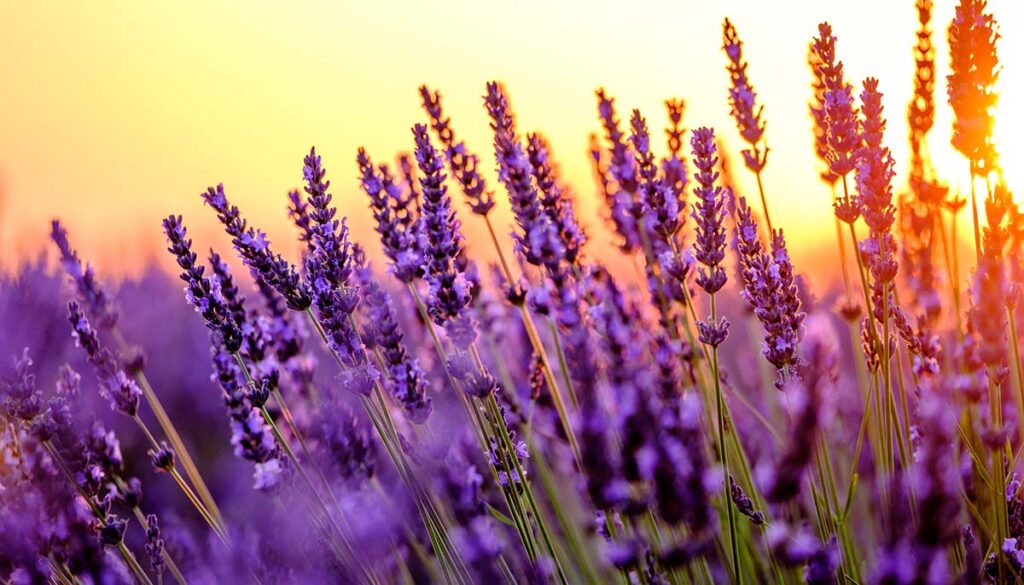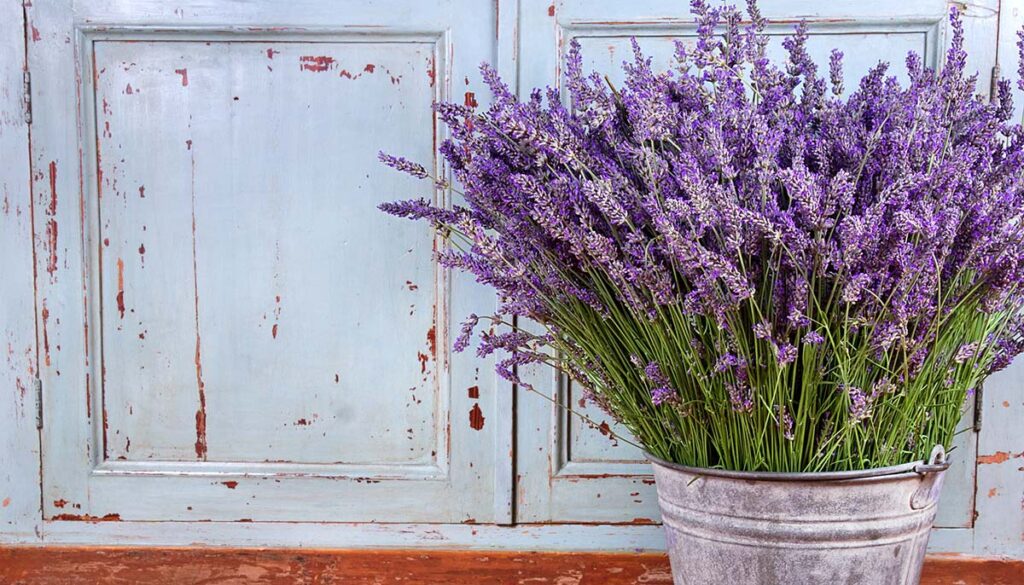Why Lavender? A better question is Why not?! This hardy, drought-resistant herb is one of the most popular plants in the world for a reason. It’s easy to grow–although you need to be patient if you’re growing from seed–and produces flowers that are perfect for drying. If you’ve been thinking about growing lavender at home, here’s what you need to know.
Types of Lavender
Although we tend to talk about lavender as a generic term, there are 39 different species of the plant! Lavandula includes Common or English Lavender, French Lavender, Spanish Lavender… you get the idea. While purple is by far the most common colors, you can also find special cultivars that are blue, pink, or even white.

Some plants are hardier in drought-prone areas, while others can survive colder climates. Check your hardiness zone against the recommendations for the cultivar to see if it will thrive where you live.
Soil and Sunlight
Lavender is native to the Mediterranean, even though the most common types are French and English. Confusing, right? The important thing to remember is that lavender prefers the sunny, dry conditions where it evolved.
That means full sun and well-drained soil, so pick a place where your lavender will get plenty of light and amend the soil, if needed, so that it’s not too heavy or damp. Lavender thrives in the same conditions as rosemary and thyme, since they are all semi-woody, sun-loving herbs, and planting all three together can create a fragrant paradise for gardeners and chefs–plus the bees will be happy, too.
To Pot or Not?
Lavender will grow in pots as long as it has plenty of sunlight and well-drained soil. However, once this hardy, drought-tolerant perennial gets established in a garden bed, you’ll find that it can grow into a small shrub. Lavender looks incredible when planted as a border along a garden path or walkway. It’s also spectacular as a mass planting–just make sure to prune your plants after the first year to keep them producing flowers.

If you don’t have the space to plant your lavender directly in the soil, never fear. It’ll still thrive in pots. Choose one that’s bigger than you think you’ll need–lavender gets surprisingly large. A full-grown plant can be 2-3 feet tall, and the foliage will form a mounded clump that does best with a bit of room to breath. Remember, lavender doesn’t like being too damp, and that includes moisture trapped in the leaves.
What to Do With Your Harvest?
First, dry your flowers. Pretty much anything you might want to do with lavender requires the blooms to be dry. The best way to do this is to cut the stems, then place the flowers upside down in lunch-sized paper bags. Tie off the bags and then hang the bunches in a cool, dry place until they’re totally dry.
Before you get too excited, know that you won’t be able to make your own lavender essential oil at home. That requires bushels of flowers and specialized equipment. However, you can make your own infused oil!

Steeping dried lavender flowers in a carrier oil such as sweet almond, jojoba, or even olive creates a lightly scented, herbal oil that you can use for massage, hair, or even your complexion. Make sure the flowers are completely dry, though, or the mixture might spoil. Fill a glass jar with dried flowers, then add in the oil and seal the lid tight. Let the jar hang out for a week or so, shaking it once a day. Then drain the flowers using some cheesecloth or a fine-mesh sieve.
The sweet, heady scent of lavender is known for being calming–but you can cook with the herb, too. Herbes de Provence is a mixture of dried herbs that features lavender, rosemary, and other herbs that you can grow at home. Try creating your own signature blend instead of relying on a package from the grocery store.













